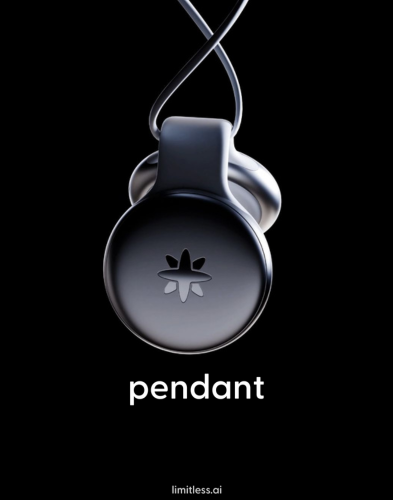‘Don’t even consider’ Microsoft? Gosh • The Register

Comment Probably the single most common argument against switching to Linux is the absolute non-negotiable requirement of many organizations to have Microsoft Exchange. Here’s a fascinating glimpse of the view from the other side.
We originally interpreted the title of Lionel Barrow’s blog post, “Don’t even consider starting with Microsoft,” to mean starting a job with Microsoft, but no. In fact, the subtitle is more descriptive: “In which a G-Suite user navigates the upside-down world of Exchange, 365, and SharePoint.” It’s a fascinating glimpse into how horrifyingly complex, even irrational, the Microsoft 365 software stack looks to someone who is used to the Gmail way of handling such business communications: groupware, as it was called in the ancient times. Email, user accounts, file sharing, and so on.
The impression is not good. His criticisms are many, varied, and categorized: Outlook and Calendars, SharePoint and OneDrive, “Everything is an everything application,” then Groups, and finally a conclusion. Significantly, that links to the excellent “PHP: a fractal of bad design” article from 2012, which we highly recommend to anyone not familiar with it.
His gripes range from simple UI issues:
To obscuring rather than highlighting important information:
Via entire concepts that should be long obsolete:
Some of the basic assumptions are strange to someone who didn’t grow up with this stuff:
He points out multiple ramifications of this. You can invite someone to a meeting that isn’t yours by forwarding an email, but if the time of a repeating event changes, they won’t be informed. Meeting notifications, including cancellations, are emails and get threaded in with comments, making changes very easy to miss.
He concludes, and we can’t fault him:
Moving on to SharePoint and OneDrive, he explains something that we’re sure makes sense to Microsofties:
This too has unexpected consequences, such as the source of comments on shared documents. New comments come from “SharePoint Online,” but replies come from a user account instead – even if they’re the same person. He documents his discovery:
He then goes on to note various inconsistencies between different views of the same shared data. Depending on where you are, in which “app” – which are all just web pages now, remember – the search box might search your emails, or your OneDrive, or Contacts, or Tasks, or Teams meetings. They all look similar, they all have search, but what you’re searching depends on how you got there.
When he moves on to how Microsoft 365 handles groups, there are no more explanations of how and why things are this way, because it’s unfathomable. There are groups in Outlook, and also Distribution Lists, which are different. There are more groups in his MS Exchange Profile, which are different from the groups in his MS Exchange Account. Both are different and separate from Microsoft Entra groups. Depending where he looked, he found himself to be in two, or 11, or 12, or maybe more.
It’s a fun read. Decades ago, this vulture was a certified MS Exchange Server admin, and ran umpteen Windows NT Server domains too. There was a point where some of this stuff sort of made sense, but the beginning of our personal transition to Linux was the introduction of Active Directory with Windows Server 2000. AD’s complexities easily outdid those of Novell Directory Services, which destroyed Netware 4 in the market – and ultimately Novell. We did keep up with it – The Register Guide to Windows Server 2012 was evidence of that, but it’s gone now, except for an extract.
Mr Barrow is clearly a smart chap. In the post, he says: “Every job I’d ever had since finishing college 15 years ago had used Google for IT.” That time at college would appear to mean a Masters in Computer Science. Leaving college a decade ago, presumably in his early to mid-twenties, implies he’s in his thirties now: a millennial.
It’s not so strange that in several companies over a decade, they all used Gmail. It’s easy, it does the job, it works on all major OSes, and has good clients for smartphones. There are good reasons it has thrived, and it was already around a decade old when Barrow graduated.
There are important points to take away from this, we feel, for Microsoft, and for other vendors too. Having worked on several “Agile” projects in the past, this vulture regards the whole concept as somewhere between superstition, faith healing, and outright mythology, and mostly, rather annoying and inapplicable to almost everything to which it’s applied. However, there are valuable nuggets buried under the flimflam of standups and sprints and scrums and kanban boards. The concept of Just Barely Good Enough (JBGE) is for us one of the most important.
Over decades, multiple companies have gone up against the duo of Microsoft Outlook and Exchange Server. Most employed the same tactics: go head-to-head with something as functionally complete as possible, but with some other advantage, such as being cheaper, or more scalable, or based on FOSS.
HP OpenMail was at one point a highly compatible rival, but the company ended up flogging it off to Samsung. Samsung Contact was discontinued in 2007. Another fork became Scalix, later acquired by Xandros, the inheritors of Corel LinuxOS.
In 2005, we reported that the FOSS Open-Xchange boasted 90-95 percent of the functionality of Microsoft Exchange and SharePoint. It’s still around, and claims over 220 million users. A survivor, as is Lotus HCL Notes, which is still around, but we suspect wins very few new customers. We’ve seen multiple different estimates that several tens of thousands of large companies still run Notes, which implies at least a few million active users. Even the former Novell, now OpenText Groupwise, is still around. It may have tens of thousands of users.
Put them all together, and… oh, about one-tenth of Gmail, then.
It has won. The entry level is free, it does the job, the web client is still good today – it even does plain-text email and interleaved quoting like a pro. It works with legacy clients too. While millions of middle-aged managers kept working with the same old familiar devil they knew, the red/yellow/blue/green weed was spreading, and now, a new generation of people grew up with this simpler tool and it does all they need.
Gmail isn’t perfect, it doesn’t do all the things that all those other groupware packages do – but even when it was introduced, over 20 years ago, it was Just Barely Good Enough to compete, and it’s stayed relatively small and simple since. It does the essentials.
It is worth remembering that some of the core Google Workspace apps were bought in. In 2006, Mountain View acquired Upstartle for Writely, which became Google Docs, and months later, 2Web Technologies, whose XL2Web became Google Sheets. The next year, it bought Zenter, which along with Topic became Google Slides. The point being that these are later, bolt-on extras: they weren’t originally part of the core Gmail offering, and they’re easily replaced by full-fat local apps.
This vulture installed a lot of Outlook in the late 1990s, and for the bigger clients hooked it up to Exchange Servers – and fixed them when they filled up and fell over. What Outlook could do for a keen executive was unbeatable. Outlook meant Exchange, and Exchange required Windows Server, and that meant adopting Active Directory. They were sine qua non of any serious growing organization.
A quarter of a century later, the previous generation’s essential power-user tools, from Active Directory and Group Policies up to this week’s iteration of Office 362.5, are the next generation’s baffling arcana. Microsoft successfully migrated its legacy stack of Windows binaries to JavaScript in the browser, which is impressive, but in doing so, it kept all the complexity. To product management, we suspect that those power features are the selling points. Ripping them out is inconceivable.
Which is how we arrived at Windows 11, with mandatory cloud accounts even at home, built-in nag screens telling paying users that they need more OneDrive space, the unloved Teams pinned to the immovable taskbar, bundled LLM-bot slop generation, and adverts for additional payware in what’s left of the Start menu. Once Windows uniquely exposed its users to the risk of spyware, but Microsoft has fixed that by pre-installing it for your convenience. Oh, and some added incentives to buy in for people on the older version.
It smacks of desperation to us.
There are options. Microsoft was once a renegade startup. It could assemble a team bold enough to take the chainsaws to Windows, Office, and Outlook, and brutally prune them down to something tiny and minimal and Just Barely Good Enough. Back in the Windows 7 era, it demonstrated MinWin, which cut the core of Windows 7 down to something as small as Windows 95: about 25 MB. That’s the spirit.
Meanwhile, as we have argued before, the FOSS world really needs a minimal ChromeOS rival. We admire the sentiments behind the EU OS proposal, but not the choice of tech to implement it. For us, the KDE Linux project is a better design, but KDE itself is top-heavy these days. We’d like to see a “KDE Litem” pruned back to the core desktop functionality of Windows 95 and NT 4.
We really enjoyed Mr Barrow’s tour of madness. It’s nearly three decades since this vulture fought this stuff daily, but we have never missed it, and it brought a wry smile to our face to see how strange it all seems to a 21st century adult. ®











